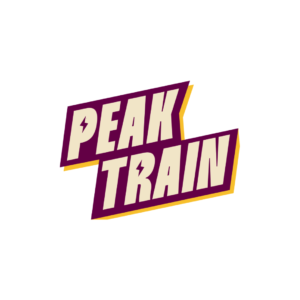Tips to Help Ease Your Lower Back Pain
One of the most often mentioned concerns people have at some point in their life is lower back discomfort. Lower back discomfort can seriously interfere with everyday activities and general quality of life whether it results from a sudden accident, hard lifting, or extended sitting. Fortunately, there are several efficient therapies and techniques accessible to help control and reduce chronic pain. Working with physiotherapy clinic can offer major comfort and long-term rehabilitation choices if you’re looking for lower back pain treatment in Toronto.
Get Expert’s Tips for Healing Lower Back Pain
These are some great ideas to help with lower back discomfort and boost your general health.
1. Keep proper posture
Particularly for people who spend long hours seated at a computer or driving, poor posture is one of the main causes of lower back discomfort. Sitting slumped or slouching causes needless strain on your lower back muscles, which over time causes pain.
Correct posture helps prevent and reduce lower back discomfort by:
- Having your knees at a 90-degree angle and your feet flat on the floor, sit straight.
- To help your spine naturally curve, use lumbar support—a pillow or a rolled-up towel.
- To stop rounding of your upper back, keep your shoulders relaxed and centred over your hips.
- Every 30 minutes, take frequent breaks to stand, stretch, and move about to decompress your spine.
A Toronto physiotherapy clinic can evaluate your posture and suggest exercises or changes to keep better alignment all through your daily life.
2. Keep Moving with Easy Exercises
Though it would seem contradictory, controlling lower back discomfort depends on keeping active. While modest exercise helps keep your muscles supple and lessens stiffness, bed rest can actually prolong discomfort and stiffness.
Among low-impact workouts worth thinking about are:
- Walking: Walking is a basic but efficient method to keep your body active without aggravating your back too much.
- Swimming: Water-based workouts are great for people with lower back discomfort since the water supports your body weight, so lessening of the strain on your spine.
- Stretching: Regular stretching helps you to increase flexibility and helps to avoid tight muscles aggravating your lower back discomfort. Emphasise stretches aiming at your lower back, hip flexors, and hamstrings.
A Toronto physiotherapist can design a customised workout programme emphasising your particular condition so you remain active without exacerbating your pain.
3. Build Your Core Muscles
Your spine is much supported by your core muscles—abdominal muscles, back muscles, muscles around your pelvis, and so on. Weak core muscles can cause bad posture and strain your lower back more broadly.
Including core-strengthening activities in your programme will help your spine stay more aligned and reduce lower back discomfort. Among the activities you should give thought are:
- Planks: Strengthening the whole core, this is a basic but quite powerful workout.
- Bridges: Bridges help to increase stability by focusing on your glues and lower back.
- Pelvic tilts: While increasing flexibility, pelvic tilts help to strengthen your abdominal muscles and lower back.
Under the direction of a Toronto physiotherapy clinic, strengthening your core will help to improve your general spinal condition and lessen your chance of recurrent lower back pain.
4. Use Cold and Heat Therapies
Simple but powerful therapies for lower back discomfort are heat and cold treatment. Based on the origin of your discomfort, either heat or cold can help:
- Cold Therapy: Applying an ice pack or a cold compress to the afflicted area inside the first 24 to 48 hours of an injury can help lower inflammation and dull the pain. Acute injuries like sprains or strains benefit most from cold treatment.
- Heat Therapy: Heat treatment helps loosen stiff muscles and increase local blood flow, therefore facilitating healing. To relieve muscular spasms or persistent lower back discomfort, think about soaking in a warm bath, using a heating pad or heated towel.
Whether heat or cold, a Toronto physiotherapist can suggest the best course of action for your particular kind of lower back discomfort and walk you through how to administer it correctly.
5. Engage in Intentional Motions
Many cases of lower back discomfort arise from improper or abrupt motions stressing the muscles. Being aware of your daily movement will assist stop more suffering and damage. Here are a few pointers to consider:
- Lift properly: When lifting big objects, bend at your knees and maintain a straight back using your legs instead than your lower back. Steer clear of jerky or twisted actions.
- Avoid sudden movements: When rotating or from sitting to standing, gently and deliberately prevent straining your back muscles via gentle motions.
- Engage your core: Engage your core: For extra support to your spine, be sure you are using your core muscles anytime you are lifting or moving.
To lower your risk of injury and suffering, a Toronto physiotherapy clinic can teach you how to do daily tasks with correct form and thoughtful movement.
6: Get Enough Support and Sleep
Your lower back discomfort could be much reduced by your sleeping posture. Bad sleeping position or a mattress lacking enough support might increase your discomfort and complicate recovery.
To encourage improved sleep and ease lower back discomfort:
- Sleep on your side with a pillow between your knees to maintain a neutral spine.
- To decompress your lower back, sleep on your back with a pillow under your knees.
- Purchase a supportive mattress free of sag under your body weight that preserves correct spinal alignment.
A Toronto physiotherapy clinic can provide advise on how to change your sleeping posture and suggest stretches or exercises to help tension release before bed.
7. Think through Manual Therapy
In Toronto, manual therapy—which comprises hands-on approaches including massage, joint mobilisation, and manipulation—can be a useful component of lower back pain treatment. Manual treatment increases joint range of motion, releases tight muscles, and improves circulation.
Using particular techniques, a Toronto physiotherapist specialised in manual therapy can target the underlying reasons of your lower back discomfort and encourage healing.
8. Consult a Professional Physiotherapist
It could be time to contact a physiotherapy uptown Toronto clinic if your lower back discomfort continues even with self-care practices. Assessing your condition, determining the underlying reasons of your pain, and creating a customised treatment plan including exercises, manual therapy, and other modalities including ultrasonic or electrical stimulation can help a physiotherapist.
To stop future recurrences of lower back discomfort, physiotherapy treatment sometimes combines pain relieving strategies, strengthening exercises, and posture training. Working with a physiotherapist in Toronto guarantees that your therapy is specifically suited to your needs, so enabling long-term relief and recuperation.
In Conclusion
Although lower back pain might be incapacitating, you can control and reduce your agony with correct techniques and therapies. Your pain will be much reduced with simple posture corrections, consistent exercise, and conscious movement. Significant comfort can also come from strengthening your core, using heat or cold treatment, and consulting a Toronto physiotherapy clinic professionally.
Though it’s a widespread problem, lower back pain shouldn’t rule your life. Incorporating these ideas into your everyday schedule and seeing a physiotherapist can help you to be proactive in reaching a back free from pain.














Post Comment